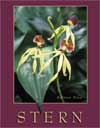1. Roots anchor plants and absorb water and minerals in solution. A
germinating seed radicle becomes the first root. Taproots with branch roots,
or adventitious roots that become a fibrous root system develop from the radicle
or the stem just above it. Many plants have combinations of both systems. 2. Four zones or regions of young roots are recognized: (1) A protective
root cap that also aids in the perception of gravity. (2) A region of cell division.
Its apical meristem subdivides into a protoderm, which produces the epidermis;
a ground meristem, which produces the cortex; and a procambium, which produces
primary xylem and primary phloem. (3) A region of elongation in which the cells
produced by the apical meristem become considerably longer and slightly wider.
(4) A region of maturation in which the cells mature into the distinctive cell
types of primary tissues. 3. Some of the epidermal cells in the region of maturation develop root
hairs; the root hairs greatly increase the absorptive surface of the root. The
tissues that mature in this region are similar to those of stem tips, but pith
is absent in most dicot roots and originates from the procambium in monocot
roots. 4. The cortex has an endodermis with suberized Casparian strips at its
inner boundary. 5. Next to the endodermis toward the center of the root are parenchyma
cells constituting the pericycle. Branch roots and the vascular cambium arise
in the pericycle. 6. In dicot roots, the primary xylem usually first forms a solid core
with two to several arms in the center of the root; a pith may be present in
monocot roots. 7. Primary phloem first is produced in discrete patches between the
primary xylem arms, but the tissues eventually appear as concentric cylinders.
In woody plants, a cork cambium usually arises in the pericycle and produces
cork tissues similar to those of stems. Roots may graft together naturally.
There are no leaves in roots. 8. Specialized roots include those for food- or water-storage; pneumatophores;
aerial roots (velamen roots, prop roots, photosynthetic roots, and adventitious
roots); contractile roots; and buttress roots. Haustoria are peglike parasitic
roots. Mycorrhizae are mutualistic associations between roots and fungi. Some
plants have nitrogen-fixing bacteria in nodules on their roots. 9. Root crops include sugar beets, beets, turnips, rutabagas, parsnips,
carrots, sweet potatoes, yams, and cassava. Several spices are obtained from
roots. Other uses of roots include the production of alcohol and the extraction
of dyes, drugs, insecticides, and poisons. 10. Soils contain a mixture of ingredients, including sands, rocks,
silt, clay, humus, dead organic matter, plant roots, small animals, microorganisms,
plus air and water, within pore spaces of various sizes. 11. A vertical column of soil exhibits horizons; the topsoil is divided
into an upper A horizon and a lower E horizon. The B horizon
(subsoil) usually contains more clay and is lighter in color than the topsoil.
The C horizon (bottom portion) constitutes the weathered soil parent
material. 12. Living organisms in the soil decompose organic matter, the source
of most important plant nutrients. Animals also cultivate the soil. Soil erosion
is affected by topography. 13. Soil texture pertains to the relative proportions of sand, silt,
and clay. More than half of the composition by weight of mineral matter is oxygen. 14. Soil structure refers to the arrangement of the soil particles into
aggregates. Good soils are highly granular and have pore spaces that constitute
about half the total volume. 15. Water in the soil occurs as hygroscopic water, gravitational water,
and capillary water. 16. The field capacity of the soil is the amount of water that remains
after the rest of the water has drained away by gravity. Soil reaches the permanent
wilting point when plants wilt permanently because they can no longer extract
enough water from the soil for their needs. Available water is soil water between
field capacity and the permanent wilting point. | 


 2003 McGraw-Hill Higher Education
2003 McGraw-Hill Higher Education